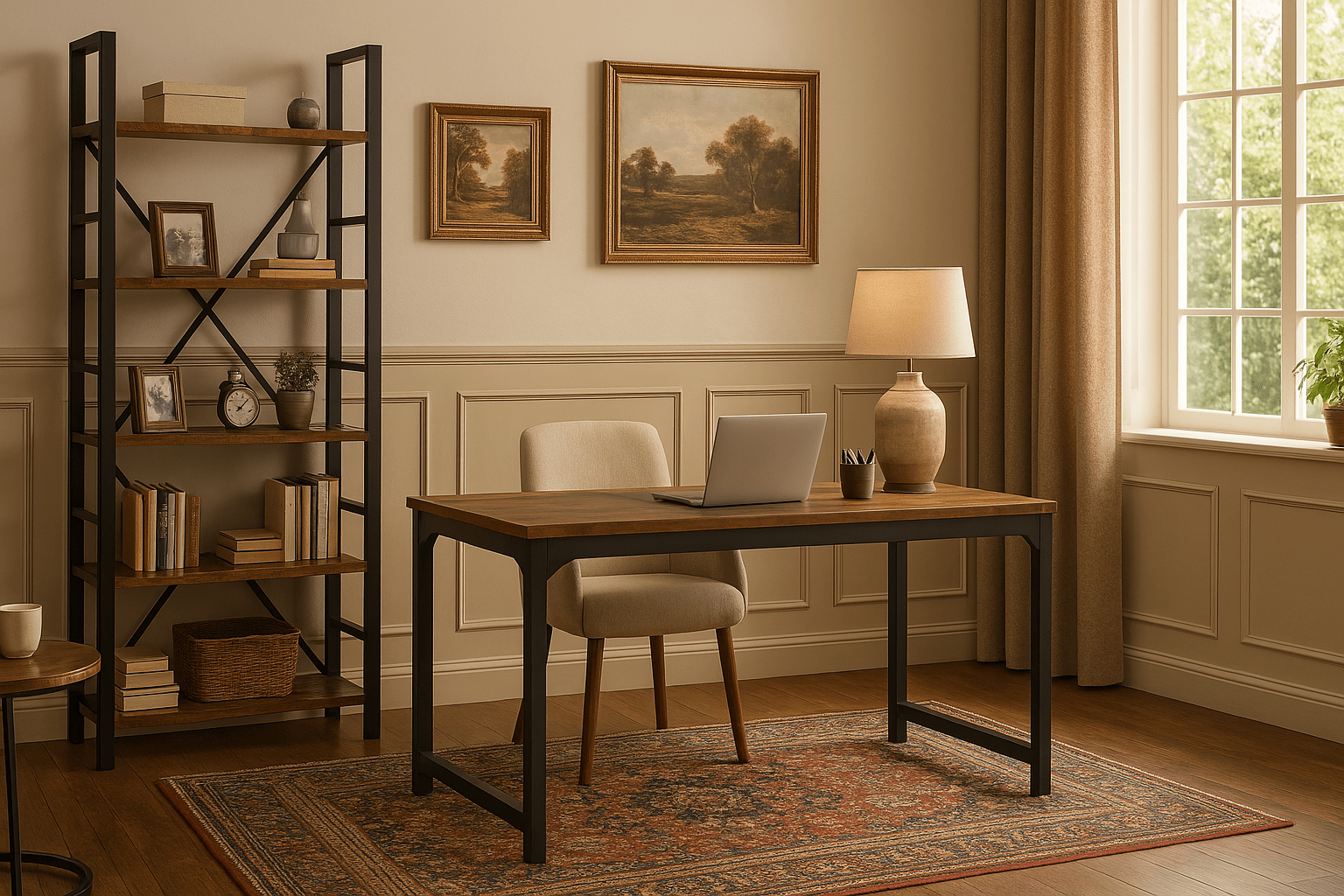What Is a Shoe Rack?
A shoe rack is a simple, open-frame storage unit designed to hold multiple pairs of shoes. Most racks are tiered, allowing you to stack shoes vertically and keep everything in plain sight. It’s a no-fuss solution—quick to access and great for keeping your most-used shoes right where you need them.

Pros of Shoe Racks
- Affordable and easy to set up. Most models require minimal assembly and are budget-friendly.
- Keeps shoes ventilated. The open design promotes airflow, which helps prevent odor and moisture buildup.
- Lightweight and flexible. Easy to move around, making them ideal for renters or anyone who rearranges furniture often.
Cons of Shoe Racks
- No protection from dust or dirt. Shoes are exposed, which may not be ideal if you want a cleaner, more polished look.
- Less visually tidy. Depending on how many shoes you own, an open rack can look cluttered.
- Not suited for all settings. They’re practical, but may feel too casual for more formal entryways or living spaces.
Related read: Top 6 Shoe Storage Ideas for Maximizing Space
What Is a Shoe Cabinet?
Unlike open racks, a shoe cabinet is an enclosed piece of furniture designed to keep shoes hidden and protected. Think of it like a dresser for your footwear. Most come with doors, drawers, or flip-down compartments that create a cleaner, more finished look in your home.
Pros of Shoe Cabinets
- Neat and stylish. They keep shoes out of sight, helping your entryway or hallway look more organized and put together.
- Protects shoes from the elements. Enclosed storage shields your footwear from dust, sunlight, and moisture.
- Extra features. Many models offer additional perks like cushioned seating on top, built-in mirrors, or extra drawers for gloves and keys.
Cons of Shoe Cabinets
- More expensive. Cabinets typically cost more than basic shoe racks, especially if you're looking for a larger or more stylish unit.
- Limited airflow. Without ventilation, enclosed spaces can trap odors unless you use deodorizers or keep the cabinet regularly aired out.
- Less flexible. These are bulkier and harder to move, which might not suit renters or those who rearrange often.

Shoe Racks vs. Shoe Cabinets — What to Consider
When choosing between a shoe rack and a shoe cabinet, it’s not just about style—it’s about how each one fits into your lifestyle and space. Here's a side-by-side look at the key factors to help you decide.
|
Feature |
Shoe Racks |
Shoe Cabinets |
|
Design |
Open, shelf-like structure |
Closed, with doors or drawers |
|
Storage |
Space-efficient, easy access |
Organized, dust-free, large capacity |
|
Aesthetics |
Can be visually cluttered, stylish |
Elegant, discreet, hides clutter |
|
Cost |
Generally less expensive |
Generally more expensive |
|
Space |
Ideal for compact spaces |
Ideal for larger spaces and extensive collections |
Space Availability
Shoe Racks are Perfect for tight spots. They’re typically slimmer, lighter, and don’t need any clearance to open doors. If you’re working with a small apartment or a narrow hallway, a vertical or low-profile rack is an easy win.
Shoe Cabinets are better suited for more spacious areas. While they offer a polished look and added features, they need room for doors or drawers to open, and usually take up more floor space.
Aesthetic Preferences
If you're into a laid-back vibe or love showcasing your sneaker collection, a rack puts your footwear on full display. Great for entryways where function comes first.
Shoe Cabinets hide shoes behind closed doors, making your space feel tidy and intentional. Ideal for minimalist or formal home styles where visual clutter is a no-go.
Cleaning and Maintenance
Shoe Racks: Easy to keep clean—just a quick wipe-down and you’re done. The open design also lets shoes air out naturally, reducing the chance of odors.
Shoe Cabinets: Require a bit more upkeep. Enclosed spaces can trap moisture and smells if shoes aren't cleaned or dried properly. You’ll want to clean the interior regularly and maybe toss in a deodorizer.
Budget Considerations
Shoe Racks are Budget-friendly and readily available. Most are affordable, lightweight, and easy to move, making them a smart choice for renters or temporary setups.

Maintenance Tips for Longevity
No matter which option you choose, a little upkeep goes a long way. Here’s how to keep your shoe storage looking and smelling fresh:
For Shoe Racks
- Wipe down regularly. Dust and dirt can build up quickly on open surfaces, especially near doorways.
- Use trays or mats. Place a waterproof mat underneath the rack to catch moisture from wet shoes and protect your flooring.
- Rotate shoes. Avoid stacking heavy shoes on lighter pairs, and give each shoe time to air out between wears.
For Shoe Cabinets
- Add ventilation. Use moisture absorbers or deodorizers like activated charcoal or baking soda to keep things smelling clean.
- Clean inside compartments. Vacuum or wipe the interior regularly to remove dust and debris.
- Don’t store wet shoes. Always dry shoes completely before tucking them away to prevent mold or odor.
Making the Right Choice
If you’re still undecided, consider getting both: a shoe rack for easy daily access by the door and a stylish shoe cabinet in the bedroom or storage room for seasonal or infrequently used shoes.
Whichever you choose, Tribesigns' shoe rack & cabinets will help you create an organized, uncluttered home, starting with clever doorside storage.



